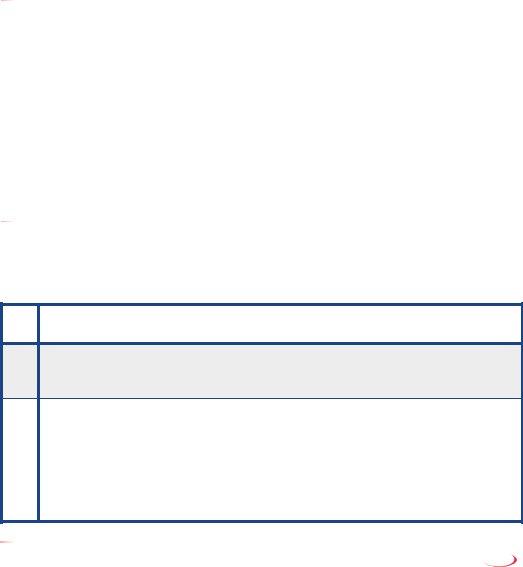Are you looking for an easy way to create free, online forms? If your answer is yes, then Sitpro Dgn Form may be the perfect solution. This cloud-based platform makes it fast and simple for anyone to quickly build complex forms in minutes - all without needing any coding experience. Whether you need a contact form for customer inquiries, a feedback survey to measure customer satisfaction or an onboarding process for new employees - Sitpro Dgn Form can help! In this blog post we'll discuss why organizations of all sizes rely on this powerful platform to manage their digital forms. Keep reading and learn how you can improve efficiency while saving time with Sitpro Dgn Form.
| Question | Answer |
|---|---|
| Form Name | Sitpro Dgn Form |
| Form Length | 12 pages |
| Fillable? | No |
| Fillable fields | 0 |
| Avg. time to fill out | 3 min |
| Other names | dangerous goods note download, dangerous goods note template uk, dangerous goods note example, dangerous goods note |

Documents
SITPRO
International Trade Guides
Dangerous
Goods Note
Completion
Guide
Dangerous Goods Note - SITPRO © 2009 Design
Completion Guide - December 2009

2SITPRO Documents Guide: Dangerous Goods Note Completion Guide

Dangerous Goods Note Completion Guide
This guide has been produced jointly by SITPRO and Vehicle Certification Agency Dangerous Goods Office as an aid to the completion of the SITPRO Dangerous Goods Note (DGN) which is the equivalent of the dangerous goods transport document referenced in the various regulations listed below. This document provides one method of meeting the requirements for a dangerous goods transport document, it will be especially useful for journeys involving maritime and land transport. This Guide does not replace or in any way change the legal obligations of the trader under the appropriate legislation concerning the transport of dangerous goods.
How to Use the SITPRO DGN
When dangerous goods are transported, the consignment must be accompanied by a transport document that contains information declaring the type and nature of the goods. The SITPRO DGN enables the shipper to complete one standard document for all consignments irrespective of port or inland depot. By doing so, it provides the receiving authority with complete, accurate and timely information as well as providing all those with an interest in the consignment with adequate information at each stage of the transport movement. The greatest benefit of using the DGN is that receiving authorities have clear and precise information on the way the goods should be handled.
Remember: Any inaccuracies and omissions in the data you provide may compromise safety, result in confusion, add extra costs and delay consignments.
Transport regulations (National and International)
The SITPRO DGN reflects the documentary requirements of the International Maritime Dangerous Goods (IMDG) Code, the Regulations concerning the International Carriage of Dangerous Goods by Rail (RID) and the European Agreement concerning the international carriage of dangerous goods by road (ADR). These three sets of modal rules are applied in the United Kingdom via the Merchant Shipping Dangerous Goods Regulations 1997 (as amended) and the Carriage of Dangerous Goods and Use of Transportable Pressure Equipment Regulations 2009 and apply to both national and international transport.
The DGN is based on the example of a multimodal dangerous goods form that is based on the format in UN Recommendation 11 - Documentary Aspects of the International Transport of Dangerous Goods and on all three of the international regulations for the surface modes of transport.
Domestic Transport
Dangerous goods transported solely within the United Kingdom are subject to the provisions of
SITPRO Documents Guide: Dangerous Goods Note Completion Guide |
3 |

ADR /RID or the IMDG Code as appropiate. Thus the carrier is required to ensure that a transport document accompanies the consignment of most dangerous goods and it is the duty of the consignor to ensure that it is made available. Further the consignor and carrier are required to keep a written record of the information contained within the transport document and to retain it for 3 months (for road/rail journeys immediately and for sea journeys from 2012).
Who should complete the dangerous note
The dangerous goods note must be completed by the consignor (a specific requirement of ADR and RID).
Who should complete the Container/Vehicle Packing Certificate (CVPC)
It is the duty of the person filling the container to sign this part of the document. Where a consignor loads the complete container then the duty lies with the consignor and his staff. Where shipments are LCL and individual consignors load groupage into a container the issue of signing the CVPC is more complicated and the following offers some guidance:
Where a consolidator collects groupage and loads a container with the various goods the duty lies with the consolidator. Further advice on the completion of this box can be obtained from the MCA: dangerous.goods@mca.gov.uk.
Guidance on Using the DGN
It is most important to follow the booking and receiving procedures as specified by shipping lines, carriers and receiving authorities. Further points to consider in completing the DGN are given below:
•If a DGN is used to document a consignment containing compatible dangerous and non- dangerous goods, the dangerous goods should be listed first, or otherwise emphasised. Wherever possible, the SITPRO Standard Shipping Note or equivalent consignment document should be used for
•The
•The DGN must, wherever possible, be completed mechanically i.e. by typewriter, aligned documentation systems or computer.
•Only goods for one shipment or journey may be shown on one DGN
4SITPRO Documents Guide: Dangerous Goods Note Completion Guide

•If necessary continuation sheets attached to each copy of the DGN may be used and should be page numbered
•For sea transport, Emergency Schedule numbers (EmS) and the Medical First Aid Guide table number (MFAG) need not be provided by shippers except in the comparatively few instances where specified in the IMDG Code. However, for commercial purposes some carriers require the information to be provided. Exporters (Shippers) should check with the freight forwarder or shipping line.
DGN Availability
DGNs are available from SITPRO approved printers. The printers are authorised to overprint notes with exporters'/forwarders' logos and standard details, and to supply them in specialised
There are a number of computer software packages available that allow for the completion of aligned documents including the DGN, usually producing the documents on laser printers. Please visit the SITPRO website (www.sitpro.org.uk/documents) for a list of both SITPRO licensed printers and companies licensed to sell software that produces SITPRO aligned documents.
SITPRO DGN Box by Box Completion Guidelines
In the table below boxes which are shaded are mandatory under the provisions of
IMDG/RID/ADR
Box Completion Instructions
1Exporter (Shipper, Consignor, Sender)
Name and address including postcode.
2Customs reference/status
This box should be used by the exporter to declare the Unique Consignment Reference (UCR) for the export movement. The construction of the declaration UCR (DUCR) should follow the format required by HM Revenue & Customs, including the use of alpha, numeric characters and spaces and hyphens - see HM Revenue & Customs.
SITPRO Documents Guide: Dangerous Goods Note Completion Guide |
5 |

Tariff and Public Notice No. 275. Exporters should NOT use this box for the purpose of quoting just the commercial reference of the consignment (see Box 4 below). This box should NOT be used for declaring the Master UCR (MUCR) - see Box 12 below - or consignments in FREE CIRCULATION moving solely within the EU.
3Booking number
Booking reference number of carrier (shipping line, combined transport operator).
4Exporter's reference
Consignment reference designated by the exporter - optional if already quoted as part of the DUCR in Box 2.
5Forwarder's reference
Consignment reference designated by the forwarder (if any).
6Consignee
Should be used for name and address including post code of the consignee/importer.
6A |
DSHA Notification (in accordance with DSHA regulations (as amended) given by |
|
There is a requirement under DSHA (Dangerous Substances in Harbour Areas) |
|
regulations to |
|
Harbour Master. A cross ("X") should be placed in the box of the person responsible for |
|
|
|
arrive. The period is usually a minimum of 24 hours but is often less for ro/ro ports. The |
|
DGN may be accepted as |
7Freight Forwarder
Name, address of freight forwarder (if any), including postcode.
8International Carrier
Name of shipping line or combined transport operator. Not required by sea for short sea roll on/roll off consignments.
9Other UK transport details
Information required in this box will differ depending on the consignment in question and the specific information and procedural requirements of receiving authorities and shipping lines e.g. delivery address, ICD terminal, vehicle booking reference, receiving dates, name of receiving authority, haulier's collection instructions.
6SITPRO Documents Guide: Dangerous Goods Note Completion Guide

10Vessel and port of loading.
Vessel name and the port of loading e.g. MV Canadian Explorer, Liverpool.
11Port of discharge and destination.
Name of the port of discharge and the ultimate destination (if inland carriage is included) e.g. Casablanca, Marrakech.
12Consignment Information
a.the UN Number preceded by the letters "UN".
b.the Proper Shipping Name (supplemented when applicable with the technical name). Trade names alone are not acceptable.
c.the Class, or when assigned the division of the goods, including for Class 1 the compatibility group letter followed by any subsidiary hazard class which should be shown in brackets;
d.the Packing Group, where assigned, for the substance which may be preceded with the letters "PG" (e.g.PG II)
e.the Sequence of the Information -
a, b, c, d
Examples
"UN 1098 ALLYL ALCOHOL, 6.1 (3), I" or "UN 1098 ALLYL ALCOHOL, 6.1 (3), PG I"
"UN 2924 FLAMMABLE LIQUID, CORROSIVE, N.O.S (Potassium hydroxide solution in alcohol) , 3 (8), PGII
f. Additional Information required by modal regulations following
For ADR |
The tunnel Code unless you are certain the goods will not pass |
|
through a tunnel |
For IMDG Code |
The flashpoint, marine pollutant, limited quantity etc |
This is not a comprehensive list of additional information
Particular attention should be paid to the following:
•Requirements for Specific Classes, including infectious and radioactive
SITPRO Documents Guide: Dangerous Goods Note Completion Guide |
7 |

material.
•Salvage Packaging, Waste, Elevated Temperatures.
•Empty Uncleaned Packagings and Tanks. There are some differences between the road, rail and sea regulations.
g.The Number and Kind of Packages e.g. 2 x 250 L steel drums; 3 x fibreboard boxes each containing 48 kg. (There is no need to specify details of inner receptacles or inner packagings).
Note: UN Packaging codes (1A1, 4G, etc) may only be used to supplement a package description. E.g. "steel drum (1A1)". They must not be used on their own
Overpacks
Where a number of boxes or drums, for example, are consolidated onto pallets or into larger boxes for ease of handling then the description on the DGN should state that the packages are overpacked. NOTE a pallet is not a package
Variations in requirements between the Dangerous Goods Regulations
In a few circumstances the requirements for a particular substance or article may be significantly different between the IMDG Code and RID/ADR. In such cases the provisions of Chapter 1.1.4.2 of the ADR Agreement and RID Regulations (consignments that fully meet the requirements of the IMDG Code for packing, mixed packing, marking and labelling shall be accepted for carriage under ADR/RID in a transport chain including maritime transport), a statement shall be included in the transport document as follows; "Carriage in accordance with 1.1.4.2.1"
H.CUSTOMS - Where a consignment forms part of a consolidation or groupage movement this box should also be used to declare the Master UCR (MUCR). The consolidator or groupage operator should construct the MUCR in accordance with the format prescribed by HM Revenue & Customs, including the use of alpha, numeric characters and spaces, hypens and forward slashes - see HM Revenue & Customs Tariff and Public Notice No. 275. The consolidator or groupage operator should normally add the MUCR to a Standard Shipping Note already completed by the Exporter.
8SITPRO Documents Guide: Dangerous Goods Note Completion Guide

13 |
i. |
Net weight (kg) of goods |
|
|
The net weight (kg) for each separate dangerous goods description. |
|
|
Note only required for explosives (Class 1) |
|
|
|
13A |
i. |
Gross weight (kg) of goods |
|
|
The weight of the merchandise in its export packaging in kilograms for each |
|
|
separate goods description included on the DGN. |
|
|
NOTE: DG rules require the total quantity they do not specify whether it |
|
|
should be mass (KG) or volume (L) but it must be shown for each Proper |
|
|
Shipping Name |
|
|
|
|
ii. Total gross weight of goods |
|
|
|
The total gross weight in kilograms of the goods should be entered. For |
|
|
containerised goods this excludes the weight of the container. |
|
|
|
14 |
i. |
Cube (m3) of goods |
|
|
Measurement of goods in cubic metres for each separate goods description |
|
|
indicating whether pallet measurements are included |
|
ii. Total cube of goods |
|
|
|
The total cubic measurement of the goods. Package dimensions of abnormal loads. |
|
|
Not required by sea for short sea roll on/roll off consignments |
15Container/vehicle packing certificate and declaration (CVPC)
Note: the CVPC is required only for sea transport, including combined journeys.
For container/vehicle loads - name of company, name/status of declarant, place and date (where and when signed), signature of person responsible for the packing/loading of the dangerous goods into the container/vehicle.
NB: The container/vehicle packing certificate and declaration serves a separate function to the dangerous goods declaration, and the two are very often signed by different people. However, for the sake of convenience the two declarations are included in the same document. The consignor (exporter) of the goods is responsible for signing the dangerous goods declaration (box 17), but the declaration under the container/vehicle packing certificate (box 15) must be signed by whoever is responsible for packing/loading the dangerous goods into the container/vehicle. It is clearly inappropriate for the consignor to sign the packing certificate (box 15), if the
SITPRO Documents Guide: Dangerous Goods Note Completion Guide |
9 |

packing/loading of the container/vehicle is undertaken elsewhere - e.g. at a groupage or consolidation depot, or at an outside warehouse. (Further guidance can be found in the introduction to this note)
16Container identification number/vehicle registration number e.g. ACLU 269687/4.
16A |
Seal Number(s) |
|
The number as shown on exporter's and/or Customs' seals used to secure the |
|
container/trailer. |
|
|
16B |
Container/vehicle size and type |
|
e.g. 40ft GP. The ISO code for container size/type may also be used (although this is |
|
not mandatory). |
|
|
16C |
Tare (kg) |
|
The tare weight as marked on the container safety convention (CSC) plate. |
|
|
16D |
Total gross weight (including tare) (kg) |
|
Total weight of boxes 13A and 16C. |
NOTE: Boxes
17
i.Name and telephone number of shipper preparing this note
ii.Name/status of declarant - name and position within the company of the person preparing the DGN.
iii.Place and date - place and date of signature
Signature of declarant - signature of a responsible person who is familiar with the nature of the danger(s) of the goods and with the legal requirements and liabilities which apply to the shipment of dangerous goods (see box 10A of the DGN - the
Dangerous Goods Declaration).
NOTE: This box only need be completed when there is a sea journey . Declarations and signatures are not required for road or rail journeys
10SITPRO Documents Guide: Dangerous Goods Note Completion Guide

Further Information
For further information about documents and procedures for the international movement of goods, contact the SITPRO Helpdesk:
•Tel: 020 7215 8150
•Email: info@sitpro.org.uk
•Website: www.sitpro.org.uk
For Dangerous Goods Queries contact VCA
•Email: dgenquiries@vca.gov.uk
•Tel: 01372 226110
•Website: www.vca.gov.uk
SITPRO Documents Guide: Dangerous Goods Note Completion Guide |
11 |

SITPRO Guides
DOCUMENTS
Dangerous Goods Note
Completion Guide
Acknowledgements
SITPRO wishes to acknowledge with gratitude the valuable assistance of the Vehicle Certification Agency Dangerous Goods Office in the production of this DGN Completion Guide.
SITPRO
Simplifying International Trade
1st Floor Kingsgate House
SW1E 6SW
Telephone: +44 (0)20 7215 8150
Fax: +44 (0)20 7215 4242
Email: info@sitpro.org.uk Website: www.sitpro.org.uk
SITPRO Ltd. is a company limited by guarantee
Registered in England & Wales No: 4188890
© Copyright SITPRO Ltd. 2009
This guide may not be republished, in full or in
part, without SITPRO’s prior permission
Disclaimer: Whilst every effort is made to ensure that the information given herein is accurate, SITPRO Ltd. accepts no legal responsibility for any
views expressed or implied or for any errors, omissions or misleading statements in that information caused by negligence or otherwise.